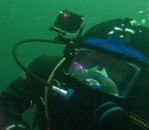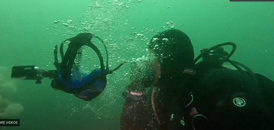I'm less concerned by the rate of his ascent than by the rapidity with which he chose to begin an ascent at all.
When I teach regulator skills to OW students, I emphasize that losing one's reg is not a problem they must solve within two or three seconds. It's a problem they can take ten or even twenty seconds to solve. They need to solve it reasonably promptly, but they have enough time not to be frantic if they don't find their primary right away. Understanding the time available gives students the mental discipline to go through the proper procedure without the hurrying that leads to clumsiness, which increases stress, which can make them forget their readily available octo, and lead to panic.
Similarly, when I teach mask skills to OW students, I tell them that a dislodged mask is not an emergency at all. It won't kill them. It's merely an inconvenience and an annoyance. They can take as much time as they need to solve it without being in any hurry at all.
My intention is to ingrain the mental discipline to solve underwater problems under water in a methodical manner at a pace appropriate to the urgency of the situation.
When this diver lost his FFM, he faced the equivalent of losing a reg (i.e., a problem he could take a little bit of time to solve) and having his mask dislodged (i.e., an inconvenience and an annoyance).
Properly perceived, this situation should not have led to an emergency ascent at all. From the video, it appears that he gave up on solving the problem under water and started heading for the surface within about five seconds.
I also teach students that an emergency ascent is the right answer only when they have screwed up twice: by running out of air and by not staying with the buddy who is their redundant air source. A diver with ample breathing gas and two functional regulators should never think an emergency ascent is called for.
In the video he acknowledged his lack of FFM training. However, even without that training, his OW training should have equipped him to handle the situation better.





